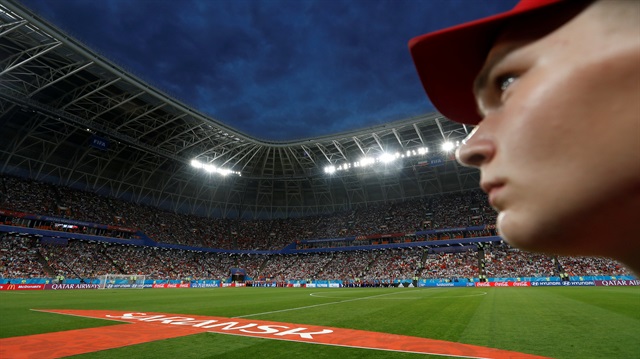
Filling those extra seats is the challenge Russia faces in ensuring the World Cup it has hosted over the past month leaves a robust legacy rather than a trail of white elephants.
Australian fan Joshua Hesse looked puzzled when told which team would inherit the brand new World Cup stadium in Russia's Saransk where he was about to watch Tunisia play Panama.
That's because few people outside Russia have heard of local club FC Mordovia Saransk.
Its average attendance last season was 3,700. The stadium's capacity? Around 44,000.
Filling those extra seats is the challenge Russia faces in ensuring the World Cup it has hosted over the past month leaves a robust legacy rather than a trail of white elephants.
It is a challenge other countries that hosted major sporting events have faced, and in many cases, flunked. The rowing centre for the 2004 Athens Olympics is deserted and decaying; Brazil's iconic Maracana stadium which hosted the 2016 Olympic soccer competition was looted afterwards, and the seats ripped out.
The question of sporting legacy will be on the agenda again in the run-up to the next World Cup, in Qatar. It will build at least eight air-conditioned stadiums, more than its population of 2.3 million can regularly use, although it says it plans to dismantle some of them for use elsewhere.
Russia's case is less stark. There is established demand for most of the new facilities built for the tournament.
But the new stadium in Saransk - the smallest city to host World Cup games - is the least likely to be economically sustainable once the tournament is over.
Located 650 km (400 miles) south-east of Moscow, Saransk has a population of 300,000 and is one of the poorest cities in Russia, with the bulk of residents earning a meagre 15,000 roubles ($240) per month.
Local officials in Saransk say they are working on a plan to ensure it will be financially viable.
The capital of a predominantly agricultural region, it was a surprise choice for hosting the World Cup as it does not have a high-profile footballing tradition. Next season, Mordovia Saransk FC will be playing in the second tier of Russian soccer.
"It is incredible," Hesse said of their new stadium when he understood who they were.
When Russia won the right to host the 2018 World Cup, President Vladimir Putin promised that, after the competition, the stadiums would become sustainable homes to vibrant football clubs.
"They will not stand empty," Putin said back in 2013. "With this there are no problems whatsoever."
Out of the 12 stadiums, only six were fully new and commissioned for the World Cup, while others were renovated or being built anyway. Six of the 12 stadiums will be home to Russian premier league clubs and there are plans to make another into the national soccer stadium.
In Saransk, the stadium can shrink. Some of the stands can be dismantled, which would reduce its capacity to 30,000. Yet that is still a big venue for a small city.
It cost almost 16 billion roubles ($257 million) to build, the arena website says, and the funds were allocated from the Russian federal budget.
The city does not have to pay that back but must cover annual running costs of 200 million to 250 million roubles, Alexei Merkushkin, minister for special purpose programmes in the regional government, said.
Vladimir Volkov, head of the Mordovia region, has said the local government is in talks with "large-scale businesses" about handing over the ground and the local team to spare the regional budget.
Moscow has said it will help cover running costs for the next year or two and Merkushkin said the aim was for the stadium to cover those costs within three years.
"The arena will not turn into a White Elephant, that's for sure. It won't be a football-only ground, it will be multi-faceted," he said, explaining that it would also host restaurants and fitness centres.
A source close to the local club, who spoke on condition of anonymity, said the splashes of orange and white inside the stadium were chosen to help camouflage empty seats.
Asked about the decoration, Merkushkin said it evokes the sun depicted on the region's flag.
"The colours bear a deep meaning," he said.




